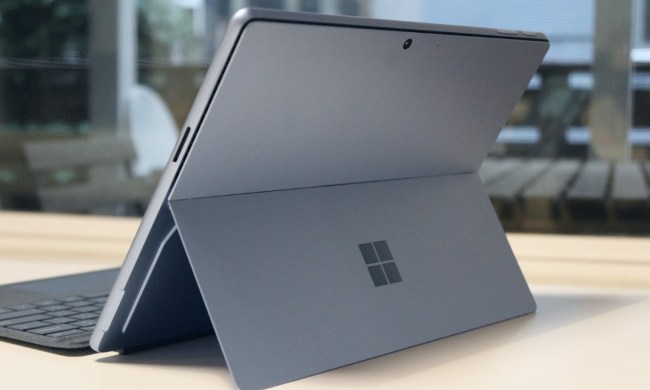
This should give phones access to desktop-class x86 applications, something that is currently impossible. Put simply, you’d be carrying an all-out Windows desktop in the comfort of your pocket. Sound familiar?
A Surface Phone — long desired, never delivered
Talk of a Surface Phone actually predates the release of the original Surface Pro. Clearly, fans were eager for something more akin to the Windows desktop platform than what Windows Phone actually had to offer. Although the hardware in many early Windows Phone devices was powerful, Windows Phone didn’t have the third-party infrastructure to compete with Apple’s iOS and Google’s Android operating systems. App selection suffered as a result.
Continuum is groundbreaking technology in theory. In practice, it’s a different story.
The future for Windows 10 Mobile doesn’t appear bright.
As the years have dragged on Microsoft has released numerous updates, but the story hasn’t changed. Windows Phone has since been rebranded Windows 10 Mobile, and there’s some cool stuff going on along that front. Most notably, Continuum allows for external monitor output with much-needed UI scaling to boot. And the latest Windows phones, like the Lumia 950, have hardware on par with the very best Android competitors.
But, aside from that and a handful of revamped Office Mobile apps, the future for Windows 10 Mobile doesn’t appear bright. App support is far too slim. Users can’t do much outside of Microsoft’s own, limited app eco-system.
That’s where the long-rumored Surface Phone comes in.
Now is the right time
It’s blatantly evident at this point that Microsoft has something up its sleeve. Back in December, Chief Marketing Officer Chris Capossela admitted to some of Microsoft’s setbacks on the mobile end.
“We need more breakthrough work,” he professed. “With Surface, we had a bunch of early misfires, but that notion of a tablet that could replace your laptop — that notion of saying, ‘Hey, Apple wants to sell you an iPad and they want to sell you a Mac, we think there’s one device that exploits the seam between those two devices’ — we need some sort of spiritual equivalent on the phone side that doesn’t just feel like a phone for people who love Windows.”
This is one of the most clear-cut official indications that a Surface Phone is on the way, and with reports from Windows Central that Intel is partnering with Microsoft to make sure x86 apps work on the device, the idea shows promise. The problem is that while the Surface tablets harbored the square footage necessary to substitute a desktop, the 5.5-inch display a Surface Phone reportedly will have wouldn’t cut it when projecting a desktop OS.
Assuming that Microsoft can successfully port the complete Windows 10 experience to mobile without cutting corners, the Surface Phone would be exactly the differentiator needed to finally get the company’s mobile hardware off the ground.

But it’s harder than it sounds. As unique as a Surface Phone would be, there’s a reason other companies haven’t tried this already.
Take Apple, for example. Although both Mac OS X and iOS have been immensely lucrative in their own respects, they may not have found the same success had the operating systems been combined. OS X, for instance, would be difficult to use on mobile, while iOS would be extremely limited on a desktop. With a Surface Phone, Microsoft — presumably coupled with Intel — would need to ensure that not only x86 programs work on mobile, but that they work on a much smaller, primarily touch interface.
Desperate measures
Continuum was supposed to be Windows 10 Mobile’s killer app. When it’s in your hand, your phone would act as expected, touch-optimized UI and all. When connected to a monitor, however, your Windows 10 Mobile device could serve a conveniently located ultra-portable PC solution.
But the lack of support for x86 software makes the idea far less worthwhile in practice. Without that, the desktop made available in Continuum is nothing more than a new way to access the very slim selection of Windows 10 Phone apps.
There’s a reason other companies haven’t tried this already.
But Windows Mobile may have one more chance to prove itself, if ARM64-bit and x86 support comes through, and results in a Surface Phone compatible with Windows 10 desktop apps.
Although Windows Phone has been declared dead for the umpteenth time this century, the current Surface lineup enjoys a positive aura that isn’t typically associated with Microsoft products. If Apple is the cool, charming kid everyone loves, Surface is his geekier school rival who, while a little awkward, always has some odd new gadget no one’s ever seen.
And, with the Surface tablet lineup, Microsoft got something right that’s been embarrassingly neglected on its smartphones — utility. The Surface Pro is revered for running things like the full Adobe Creative Suite, unlike any iPad or Android tablet on the market. That’s what gives it the upper hand.
If a Surface Phone really is in the works, let’s hope it arrives in the same vein as the Surface Pro before it, bringing PC features to mobile in a way that doesn’t alienate users accustomed to other brands. Perhaps then, we could see a less dystopian future for Windows 10 Mobile.


